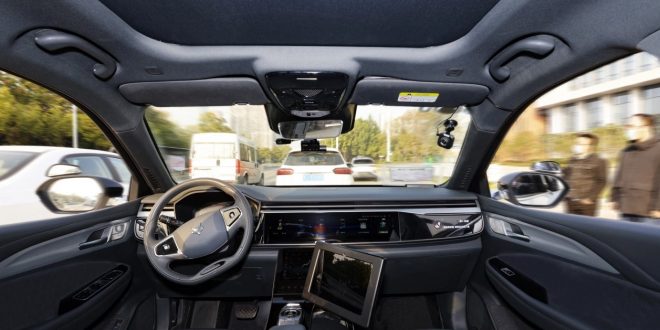The Chinese internet behemoth Baidu, well renowned for its search engines, is making significant progress in the field of autonomous vehicles.
The public will be able to use its robotaxis in Wuhan between 7 am and 11 pm starting this week without safety drivers in the drivers’ seats. Its unmanned vehicles could previously only be used in the city from 9 am to 5 pm. In some sections of Wuhan, a city of more than 10 million people, the upgraded program is anticipated to cover one million subscribers.
In contrast to Tesla’s vision-based approach, Baidu uses a variety of third-party cameras, radars, and lidars to assist its cars see better in low-visibility situations.
Baidu began providing completely autonomous robotaxi rides in August, charging customers the same as a taxi. The company’s robotaxi hailing app, Apollo Go, completed more than 474,000 rides in Q3, increasing 311% from the previous quarter. As of Q3, Apollo Go had received more than 1.4 million orders overall.
That sounds like a potentially sizable source of income for Baidu, but one should be skeptical of such numbers and wonder how many of these trips are supported by discounts. How many of these are regular, daily routes rather than special rides that early adopters take for fun? Chinese robotaxi drivers frequently offer incentives to the public to ride in their vehicles in order to boost performance numbers.
It’s also difficult to say at this point which of China’s robotaxi startups is in the lead. Their ability to expand is reliant on their relationship with the community in which they are based; major cities frequently have the authority to enact certain local laws.
Autonomous driving is receiving enthusiastic backing from local authorities around the country as one of the few remaining consumer internet areas with significant growth potential. As an illustration, Wuhan, a major industrial city in central China, was among the first places in the nation to permit the use of robotaxis for public transportation without the need for in-car safety operators. And now, even during the darkest hours of the night, the city seems to be okay with autonomous automobiles driving around.
Even putting aside a healthy dosage of skepticism, Baidu has made significant efforts to hasten the arrival of the self-driving future. Its visual-language model for distinguishing novel or uncommon things in long-tail settings is one of the moats it is building. Wenxin, the same substantial model that supports its text-to-image art platform, is supporting the AI.
According to a prior statement from Baidu, “The model will allow autonomous vehicles to swiftly understand an unseen object, such as special vehicle (fire truck, ambulance) recognition, plastic bag misdetection, and others.” Additionally, Baidu’s autonomous driving perception model, a sub-model of the WenXin Big Model, is able to significantly increase the generalization potential of autonomous driving perception by utilizing more than 1 billion parameters.
 Tech Gadget Central Latest Tech News and Reviews
Tech Gadget Central Latest Tech News and Reviews




